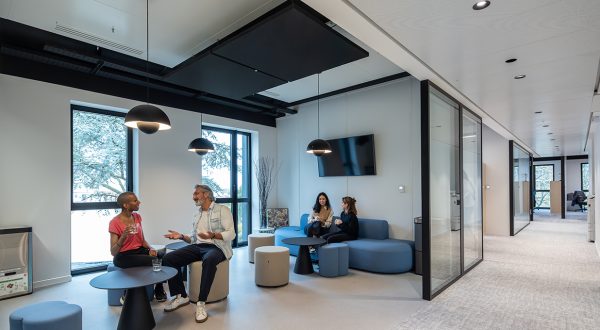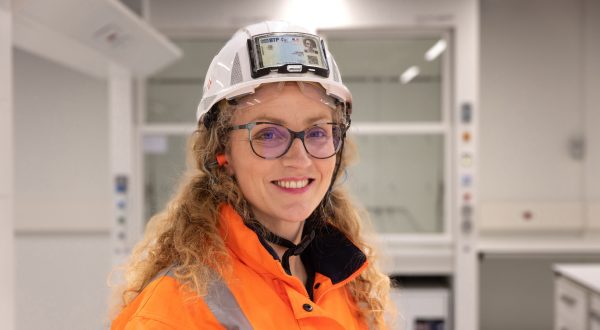
A combined approach involving data, hospitality management, and the sociology of work helps gain a better understanding of the interaction between spaces and the uses to which they are put. VINCI Energies has a special observatory: La Factory.
What impact can a common space have on its users? This is the crucial facility management issue and it is studied with the dual objective of enhancing building performance (economic and environmental) and user (regular or occasional) comfort and productivity.
“While there are any number of start-ups and a wide variety of applications, facility management is now concentrated on the key task of selecting and structuring services around the actual expectations of users,” says VINCI Facilities Director Philippe Conus. “By focusing on use and making digital changes, we are able to better meet the needs of the building’s end users.”
For the VINCI Facilities teams, La Factory, the VINCI Energies innovation space in the La Défense business district outside Paris, offers a perfect venue for analysing the use to which office buildings are put. With its open spaces, gathering spots, and pooled collaborative spaces, La Factory is a place that brings together employees and customers, generates synergies, boosts productivity, examines and improves employee well-being, and supports the emergence of new working methods.
How is the impact of a space like La Factory on its users assessed? The analysis has so far rested on two pillars: quantitative evaluation of space uses and the contribution of the on-site hospitality manager.
Jooxter, a start-up, uses IoT to measure site occupation in real time, log use of the spaces, and draw up a chronotopic record of collaborative uses (use of the various spaces per user profile). Everything is examined: temperature, perceived noise, light, air quality, and humidity.” The data enables us to identify uses, but cannot by itself enable us to understand them. For this reason the contribution of the hospitality manager is crucial,” says David Ernest, Innovation & Energy Director at VINCI Facilities.
The contribution of sociology of work
VINCI Facilities decided to expand its analysis by including experts in the sociology of work, who observe the uses to which spaces are put and their effects. Sociological observation took place in a two-step process. A first phase, performed prior to the move into the building, looked at the company culture and the organisational structure framing the activities of individuals. This step included interviews with individuals from each of the VINCI Energies brands before the move, an audit of the objectives of the plan to bring the brands together, and identification of the obvious and latent project elements.
The second phase took place during the occupation of the spaces and covered unstructured observations designed to identify issues and raise questions, analytical observations to meet the strategic objectives of the organisation, and informal conversations and talks with the employees using the open space.
The hospitality manager’s key role in performance
What was learned from this sociological analysis? “It confirmed that the hospitality manager is crucial to the performance of common spaces. He or she gives them meaning and boosts their potential, supports employees as they adopt new ways of working, and serves as the go-to person for users,” says David Ernest.
“Following an analysis of data, hospitality management, and sociology, we will need to look at a fourth factor: the economic model.”
Sociological analysis also identified the special role played by certain users who can facilitate the integration of new uses. This points to the advisability of mapping these key players. It also highlights the discrepancy between imagined use and actual use. The most striking example of this is no doubt the under-utilisation of informal spaces, the most innovative part of the project.
The broader lesson for facility management is the need to focus on both services and spatial dimensions during the design phase. No spaces without services, no services without assigned spaces.
“We are making rapid progress, even though these are still basically pilot projects. Following an analysis of data, hospitality management, and sociology, we will need to look at a fourth factor: the economic model,” says David Ernest. “To make the models cost-effective, given the cost of real estate and labour productivity objectives, we need to develop and roll out solutions and services that take service and spatial dimensions on board from the design stage onwards.”
13/12/2017


